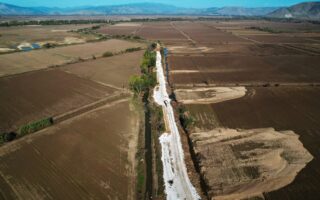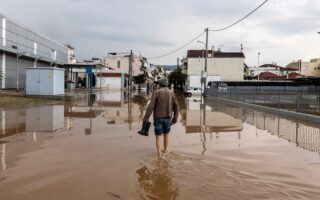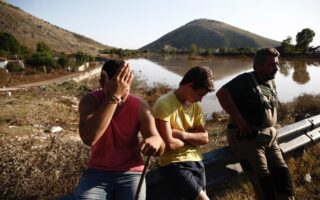How to shield Greece from the climate crisis

Last year ushered in intense and devastating climate phenomena on all scales: global, regional (Europe–Mediterranean) and local (Greece). In some cases, climate phenomena have shown characteristics that are of particular concern to the scientific community, namely their persistence (with a typical example being the increased duration of heat waves in the northern hemisphere) and their combined occurrence, which essentially means that one phenomenon feeds into the next, thus broadening their effects (such as Storm Daniel and its consequences for Greece’s Thessaly region).
Whether all that happened in 2023 constitutes the new normal that will also apply in 2024 is difficult to say. However, there is a regularity that cannot be disputed, namely the increase in temperature (which is already 1.3 degrees Celsius higher in the Mediterranean compared to the pre-industrial period), the increased duration and intensity of heat waves and the more frequent disturbances in atmospheric circulation, which may lead to extreme phenomena, mainly flooding.
The stakes for 2024 can therefore be summed up in two words: resilience and adaptation. How will critical sectors of the economy, such as agriculture and tourism, be shielded against climate risks? How will cities be transformed to cope with heat waves and floods? And how will valuable natural capital be protected from forest fires and unlicensed construction (or “licensed,” as can be seen in the paradox of forest maps)?
There is also a horizontal need to improve energy efficiency in all sectors, from industry to buildings, to reduce energy demand and to draw up management plans to protect agricultural production.
For the effort to be meaningful, that is, to apply not only to 2024 but also to the next two decades, climate change will have to play a major role in the revision of our country’s institutional framework, from regional spatial frameworks and water management plans to local urban plans in all regions of the country.
There is also a horizontal need to improve energy efficiency in all sectors, from industry to buildings, to reduce energy demand (which will make it easier to meet needs and ensure energy sufficiency) and to draw up management plans to protect agricultural production (especially in Thessaly and further south).
It is also necessary to draw up plans to adapt tourist areas that are already suffering the effects of climate change or are expected to be most affected in the coming decades, as well as to integrate the climate change parameter into the design of all major new infrastructure (from bridges and airports to hotels and marinas), which usually have a lifespan measured in decades.
Natural capital
If I were to single out one resilience and adaptation plan, it would be for the country’s natural capital (the natural beauty sites of the Natura network, which are generously listed). These are areas that have been progressively established since 1996 and which, despite the progress made in the last two years, still lack statutory management and protection plans (with very few exceptions).
As a result, they are subject to pressures that degrade them and also give way to attempts to change their character, ostensibly because they hinder development. In my reading, such a plan should be a national undertaking, particularly in the current period when the effects of climate change on the natural environment have intensified.
There is often the impression that human intervention in nature can be undertaken without consequences.
There is often the impression that human intervention in nature, for example, reducing (or, in simple terms, blocking) the riverbeds of streams and rivers, limiting the extent of lake areas, or constructing buildings in critical zones in cities and the countryside, can be undertaken without consequences.
However, the examples of Mandra, in western Attica, where the water flow from a 2017 flood followed its natural course with the well-known tragic results; the disasters caused by 2020 Ianos cyclone in the wider Karditsa area, when the water from the extreme rainfall occupied the entire original torrent bed instead of the limited width and drainage of the bed that the urban planners of the area had carved out; but also the “return” of Lake Karla to its original boundaries in 2023, resulting in the flooding of agricultural land in the southern part of the Thessalian Plain, prove – especially in view of climate change – the wisdom of the Greek proverb “the stranger and the river return to their place.”
Constantinos Kartalis is a professor at the University of Athens and a member of the European Scientific Advisory Board on Climate Change.





